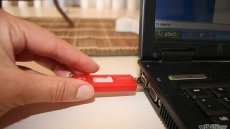A team of students has developed an early version of a foot that enables women adjusting to life with a prosthetic limb to wear heels up to four inches high.
"High heels have become an integral part of the female lifestyle in modern society, permeating through all aspects of life -- professional and social," said the authors from Johns Hopkins University who made the prosthetic foot as part of their final senior project in mechanical engineering.
"For female veterans of the US armed services with lower limb amputations, that seemingly innocuous but so pervasive and decidedly feminine part of their lives is gone," they added.
So, they took up the challenge of creating a foot that adjusts without a separate tool to a range of heel heights, holds position without slipping, supports up to 250 pounds or 114 kg, weighs less than three pounds or 1.3 kg and, of course, is slender enough to accommodate a woman's shoe.
They tried a balloon in the heel to give it spring or "energy return", as engineers say. That didn't work.
They tried a mousetrap spring but that didn't work either. Then they tried a sideways sandwich of 23 slender titanium plates to form the foot itself but that was too heavy and not springy.
A 20-layer carbon fibre footplate failed a stress test, but a 28-layer version worked, forming the base of the foot which the team now calls the "Prominence".
They built a heel-adjustment mechanism with two interlocking aluminum disks. It opens and closes with an attached lever at the ankle.
For the ankle, they used an off-the-shelf hydraulic unit that enables a smooth gait and flexing at the sole.
Alexandra Capellini, a Johns Hopkins University junior who lost her right leg to bone cancer as a child, tried the foot with a flat shoe and liked it.
The design is still in progress. It will take time to assess the commercial appeal and potential of the "Prominence", including the question of whether anything the team created could qualify for a patent.





